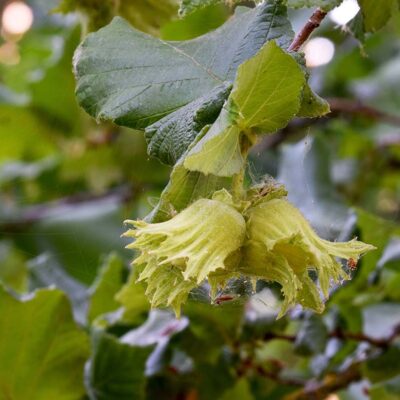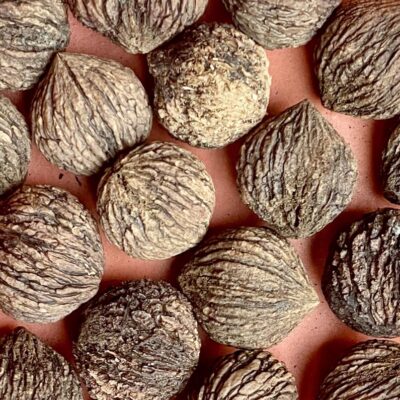Fall ’25 Bare-Roots – Sale Opens 10/1
Fall ’25 Bare-Roots – Sale Opens 10/1
Carya cordiformis
Also known as Bitternut Hickory, this is one of our amazing native hickory trees. Growing faster than Shagbark or Shellbark Hickory, it can be an excellent choice for riparian buffer zones. It is tolerant of flooding, and has a deep tap root which allows for drought tolerance. It will produce an abundance of nuts generally on a bi-annual basis. The thin-shelled nature of the nuts make it a favorite among wildlife. It is also possible to process the nuts for a high quality, highly nutritious oil. Larval host for Banded Hairstreak and Hickory Hairstreak.
Seedlings for ’25-26 were grown from seed collected in Ghent, NY.
Zone: 4-9 (Map)
Habitat: Wet bottom lands and drier upland sites. Thrives in moist soil with full sun.
Growth: 70 ft tall, 50 ft wide at maturity.
Prohibited: AZ, CA, TX
Yellowbud Hickory is remarkably fast-growing and tolerant of both flood and drought. Its nuts are good for both wildlife and for oil-pressing.
$12.00
Yellowbud Hickory is remarkably fast-growing and tolerant of both flood and drought. Its nuts are good for both wildlife and for oil-pressing.
$12.00
Carya cordiformis
Also known as Bitternut Hickory, this is one of our amazing native hickory trees. Growing faster than Shagbark or Shellbark Hickory, it can be an excellent choice for riparian buffer zones. It is tolerant of flooding, and has a deep tap root which allows for drought tolerance. It will produce an abundance of nuts generally on a bi-annual basis. The thin-shelled nature of the nuts make it a favorite among wildlife. It is also possible to process the nuts for a high quality, highly nutritious oil. Larval host for Banded Hairstreak and Hickory Hairstreak.
Seedlings for ’25-26 were grown from seed collected in Ghent, NY.
Zone: 4-9 (Map)
Habitat: Wet bottom lands and drier upland sites. Thrives in moist soil with full sun.
Growth: 70 ft tall, 50 ft wide at maturity.
Prohibited: AZ, CA, TX

